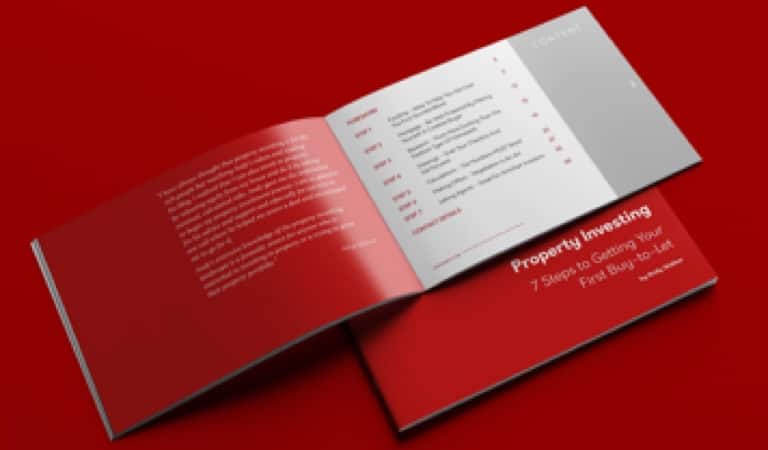Research, research, research can make all the difference to your property investing success. That said, there is something I want you to bear in mind when doing your homework, and that is this – there is no such thing as the perfect property!
There are 10 key factors you should focus on when conducting your research for investing in a buy-to-let property. This list is not exhaustive, but it covers the key essential areas to ensure you purchase an investment that will be appealing to potential tenants.
You may have to make compromises and you will have to decide which key factors are most important for your investment. This is because you will find it difficult to find a property that will tick all the boxes. It will help if you decide on the type of tenant you would prefer to accommodate first, and then you can focus more on the key factors that will meet their needs.
Contents
1. Employment
An area with a strong local economy is a must, especially if you are considering letting your property to working professionals.
You don’t necessarily need to research the areas top performing industries, but by checking that there is a good mix of employment sectors i.e. manufacturing, retail, engineering and IT, it will increase your chances of letting your investment more easily.
2. Transport Links
You should take the time to check the availability of local transport links. How far is the nearest bus stop or train station? How frequently do the services run? This can be important to people for both work and leisure.
Good transport links can have a positive effect on property prices. If you find an area that already has sufficient transport links but is also looking to improve its transport infrastructure, then it will be worth your time to investigate the details further.
Additional improvements to local transport links can cause property prices to soar even further once they are complete. Crossrail and HS2 are perfect examples.
3. Schools
This is especially important of you are considering letting your property to a family.
Catchment areas for primary and secondary schools that have been rated by Ofsted as ‘Outstanding’, will always be in high demand, particularly if they are within a 1 mile radius.
Admissions to good performing schools often favour those living closest too, but be mindful that local authorities can change catchment area boundaries.
You can easily check the local areas schools, colleges, childminders and nurseries latest inspection report here.
4. Rental Demand
This may seem obvious, but I want you to double check with local professionals that the area and type of property you are considering investing in, is in demand.
There may well be a demand within a city or town, but that doesn’t necessarily mean that ALL streets will be included. You will be surprised what a difference of a couple of hundred meters could make.
Likewise, you may find that two bedroom properties are in demand in one particular postcode, but one bedrooms are in demand within another.
Take the time to contact local letting agents and ask them to confirm if they have prospective tenants looking for the type of property you are considering purchasing.
5. Regeneration
Look for signs as to whether there are other private investors, business’s or local authorities investing in the local area.
The impact of regeneration is often too make the area a more desirable place to live, and that will benefit you a great deal in the future in terms of capital growth.
6. Parking
Private parking is not a crucial requirement for everyone, but it can put some people off if a property doesn’t have any allocated parking. Again, this factor will depend on the type of tenant you are looking to accommodate but just make sure you don’t overlook it.
Parking can be a huge issue in some areas, and replacing the front garden with a parking space or two can even add value to a property.
7. Price
If you are investing in an area that you haven’t got a huge amount of knowledge of in terms of pricing, you can easily check the recent sales history online.
You may not be looking for the deal of the century, and you may not be a great negotiator, so it’s important to check that the asking price is a realistic one.
The vendor might be a bit ambitious with their asking price which may have been steered by the selling agent looking to increase their profits. So take the time to look for previous comparable sales online before arranging any viewings.
If the price seems too high, or better yet too low, contact the selling agent and ask them to confirm the details of the property.
8. Capital Growth Potential
Some people say that investing in property is all about buying a property that will appreciate in value over time and deliver capital growth. I hugely disagree with that statement.
Owning a buy-to-let rental property is a business, and that business will only succeed if it can deliver a service and provide regular cashflow. The property will need to be in excellent condition to appeal to prospective tenants and it will require frequent servicing and repairs over time.
If a rental property fails to receive a regular income that covers all running costs, the landlord will find it difficult to maintain it which could lead to a depreciating value. Worst still, it could cause poor living conditions which could ultimately lead to having to evict the tenant.
That said, it will of course be nice if you were able to receive some capital growth in the long term. I wrote an article recently about whether house prices really do double every 10 years.
Try to get a feel for the potential capital growth opportunities based on previous sales and possible improvements to the area and local community.
If you are looking to invest in a flat/apartment, there are a couple of additional areas you should check too.
9. Lease
It’s important to find out how long is left on the lease. A property that has 80 years or less left on the lease can cause problems with obtaining mortgage lending and it can also be very expensive to renew the lease.
If a lease does need extending, it’s best to ask the current owner to claim the right to extend the lease before you purchase it, and at their expense. If not, you will have to wait until you have owned the property for two years before you can apply to extend the lease. The fewer the years left on the lease, the more expensive it will be too renew.
10. Ground Rent And Service Charge
Ground rent is the amount of money that is paid to the freeholder of the property that the leasehold sits on.
The service charge payment will cover maintenance issues for the upkeep of the grounds, gardens and communal areas.
Both the ground rent and service charge will have an annual fee. As an owner of a leasehold property you will be responsible for paying these fees, so its important to know how much they will be, so that you can factor them in to your running costs when calculating your return on investment.
Final Thoughts
Have you noticed that nine of these points can be researched at home before you consider arranging any viewings? Thanks to the telephone and the internet, you can check most of the details from home and would only need to visit the area to check point 5.
That said, when you visit a property for a viewing, I would also make time to double check your research. For example, I always walk the route for the public transport and try and put myself in the tenants shoes.
Now here is a plain example of why I said there is no such thing as the perfect property.
If you like the idea of letting your investment to young professionals you will not necessarily want a property that is located next to good schools, but would rather a location closer to big business’s. Although it would be great to buy near big business’s and good schools, you may find this hard to achieve. This is just an example of a compromise you may have to consider.
How Do Beginners Invest In Property
Believe it or not, a lot of people begin by coming ‘accidental landlords’. They find themselves in a position where it’s not convenient for them to continue living in their own home, so they look to move and find tenants to move in so their home is not left empty.
There are a number of reasons for not selling e.g. the property market isn’t performing well at the time, or they need to move quickly and want to avoid a lengthy sale process, or they want to return to their home in the not too distant future.
Others start by taking a more active approach. They like the idea of having an investment property whilst working a full or part time job, and consider their investment as a contribution to their retirement fund in the future.
If purchasing a buy-to-let investment property appeals to you, you can download my free ebook 7 Steps To Purchasing A Buy To Let Investment Property, which also includes my contact details so you can message me direct if you have any questions which I have not covered in the ebook.


